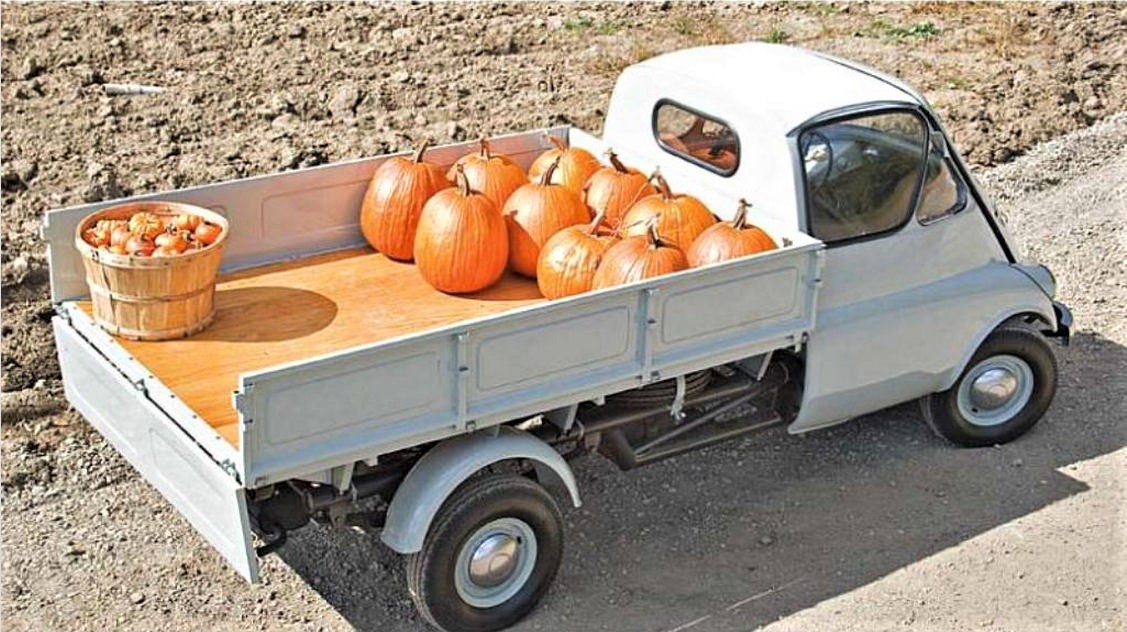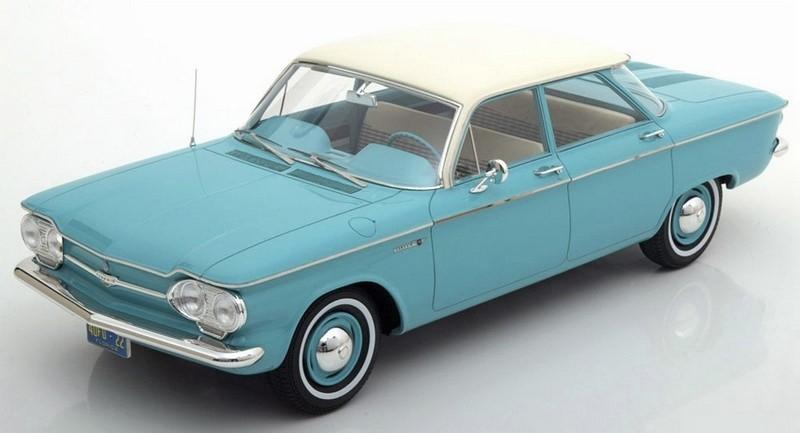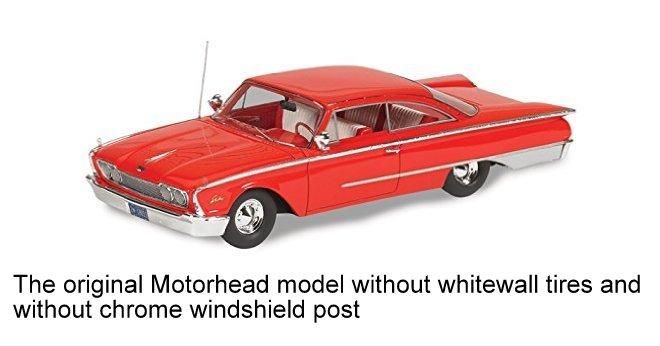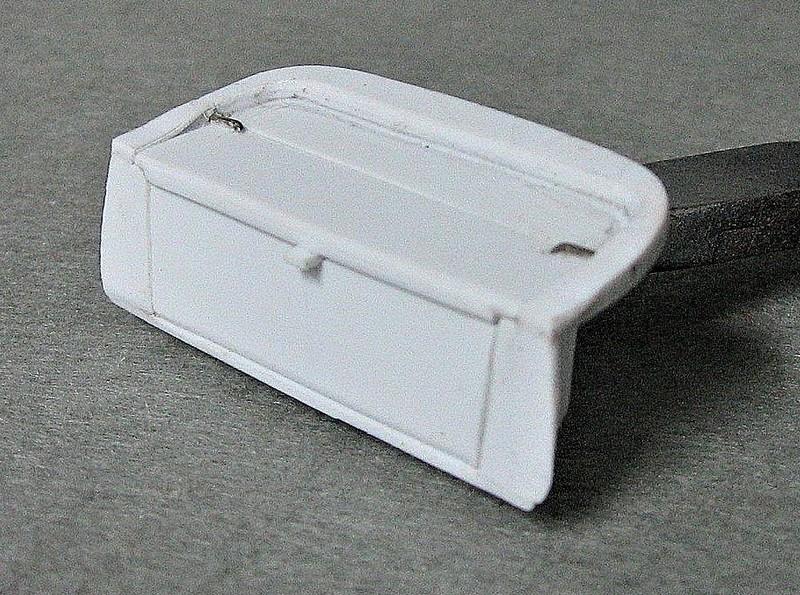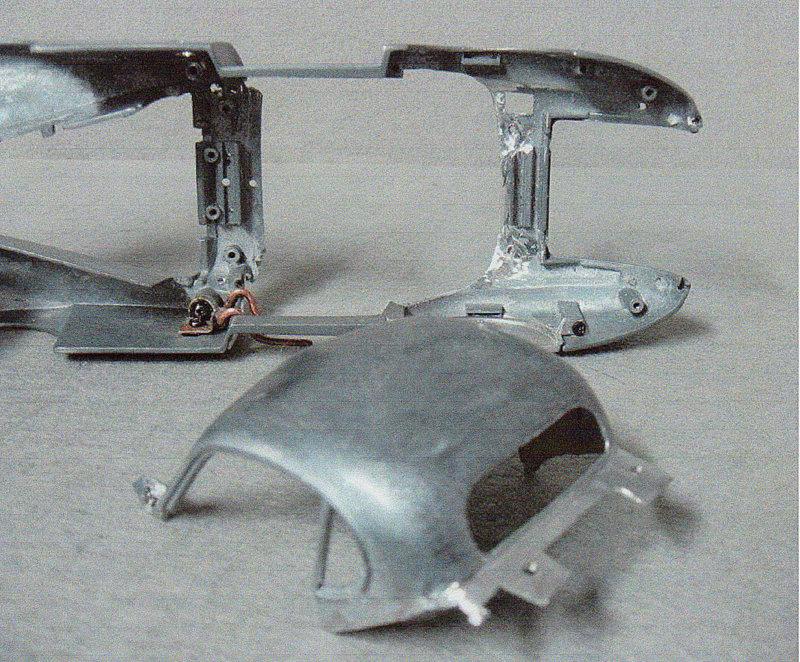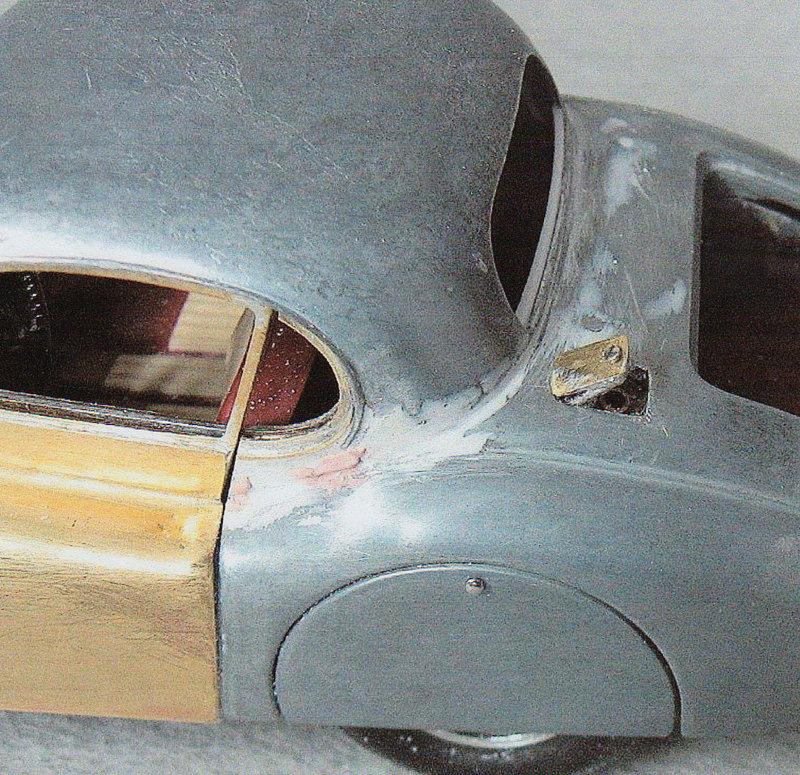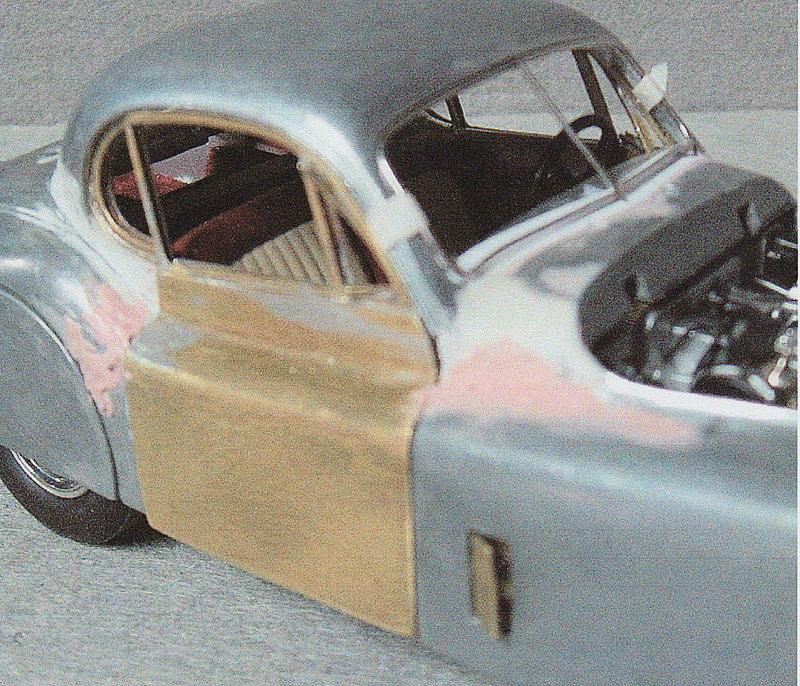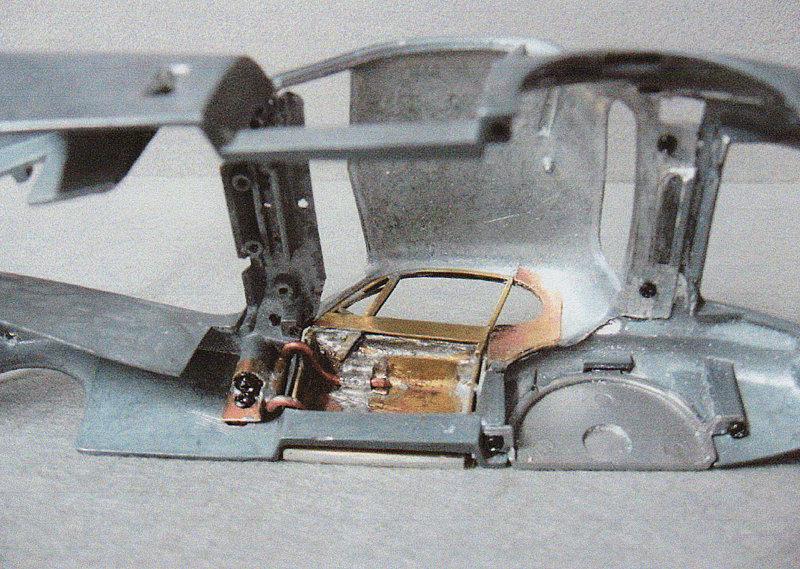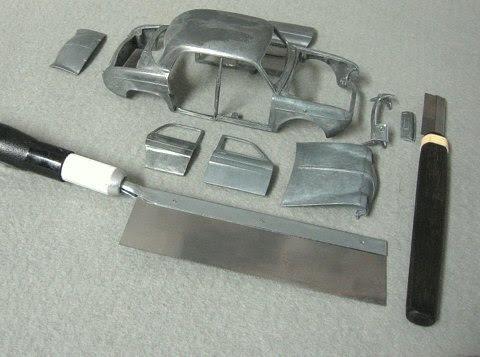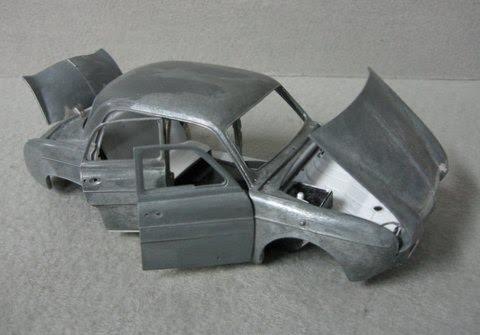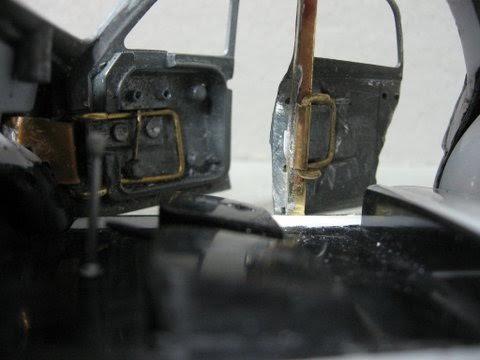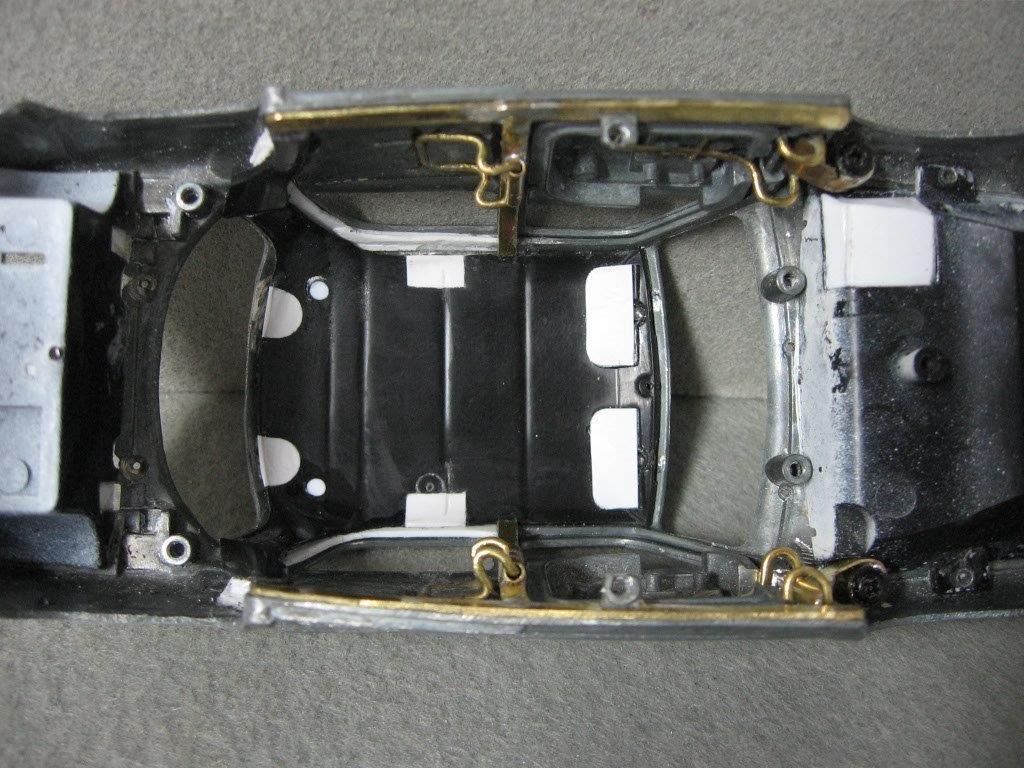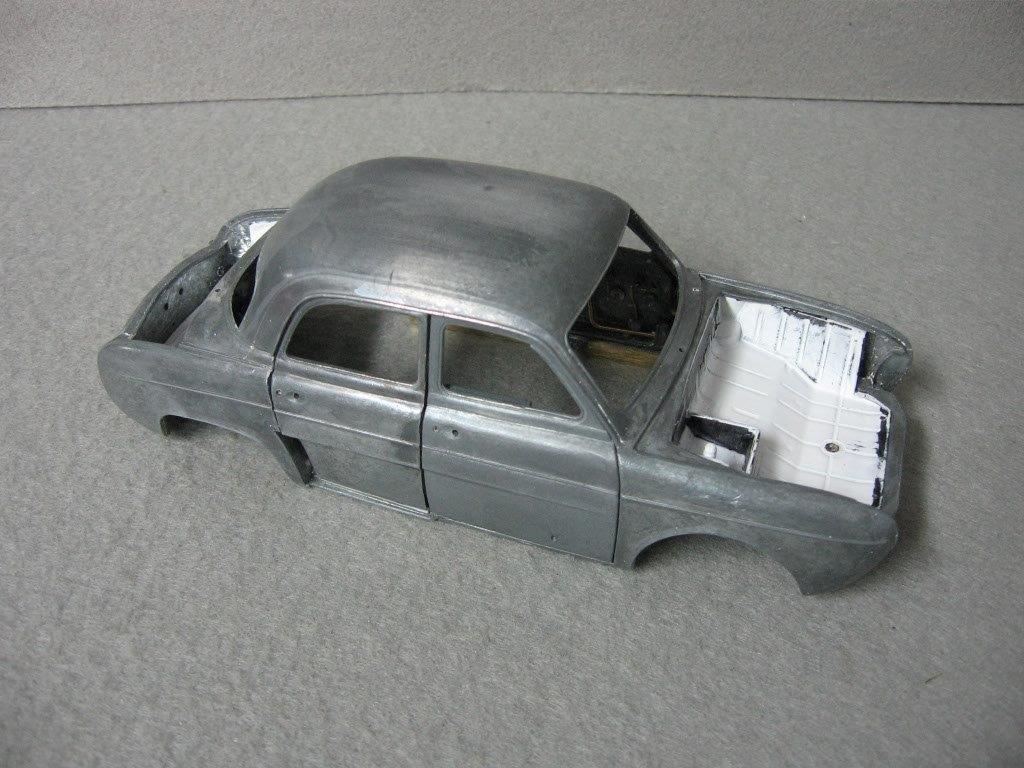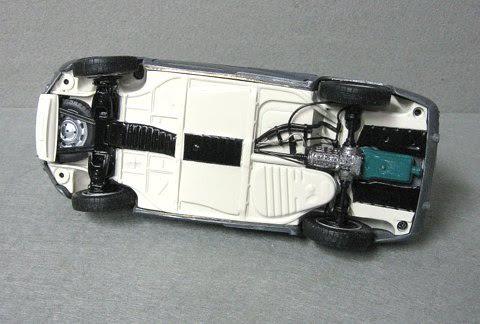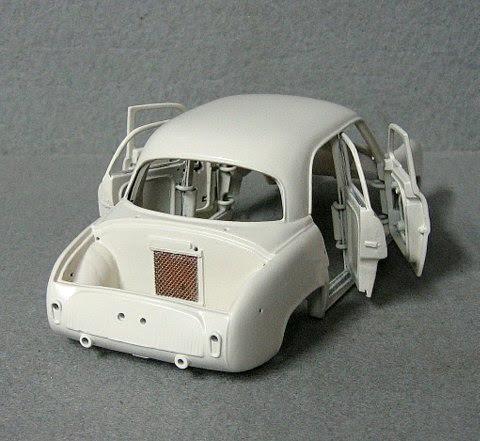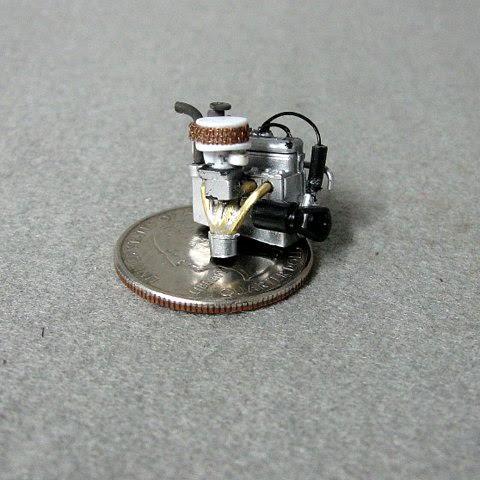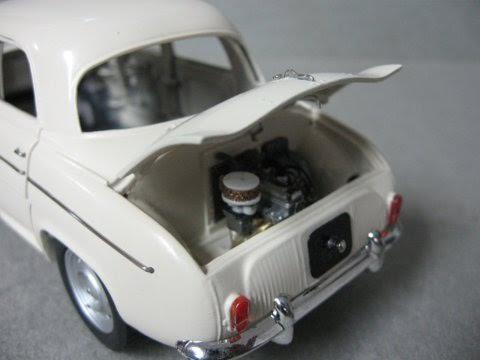
traditional
Members-
Posts
469 -
Joined
-
Last visited
Content Type
Profiles
Forums
Events
Gallery
Everything posted by traditional
-
'33 Ford Sedan Delivery...Traditional hot rod
traditional replied to traditional's topic in Model Cars
-
I seem to be in a bit of a rut doing mostly Sedan Deliveries this winter. I've just completed this hot rod project using a Speccast '34 Sedan Delivery body that only had a rear door opening coin bank. The doors and hood areas were cut away using my rotary tool and ' two-door' doors from a derelict '33 diecast sedan were shortened to fit (sedan delivery doors were 'four-door style) as well as its hood/grille area. new hinges were made for the rear door and the window area cut out with the rotary tool. The 283 fuel injected small block engine was modified (finned valve covers and handmade air cleaner) from Revell's Black-Widow kit and detailed with fuel lines/vacuum lines as well as the usual plug wires and cooling plumbing. The complete interior (seats, door panels, floor, cargo area) was scratchbuilt from styrene and fine plated wire, etc.), and the underside modified and opened up (to fit an engine), coin-bank filled in, and the whole chassis finished with a later model rear axle and handmade aluminum leaf springs/shackles, radius rods, etc. The painted 'chrome reverse' wheels are from Pegasus with the front ones narrowed slightly and fitted with larger rear tires as well as the standard Pegasus ones in front. The small ford caps are from the Revell/ Monogram Deuce Roadster kit. Paint is custom mixed basecoat and a fine orange pinstripe added before the two-part clearcoat, and the simulated carpeting is felt. My two Sedan Delivery projects this winter
-
These two 1/18 resin models traveled from one end of Canada to the other before finally arriving in Ottawa. I'd bought them in plenty of time to have them for Xmas, but due to lots of post office blunders in both Germany as well as Canada, they finally showed up yesterday.They're both beautifully proportioned and finished, but the real surprise was how attractive the Studebaker's color looks compared to the color shown on the web sites. Judging by American Excellence's as well as Car Model World's pictures I expected the Studebaker's 'Rose Mist' color to be less than ideal, but the real thing is stunning.
-
Hi Geno, Those Rancheros are so nicely proportioned and you've done a gorgeous job on yours. Just a quick hint: when photographing metalic finishes, try taking the pics on an overcast day....the paint will look a lot more natural. Actually, overcast days make the details show up nicely since there is less hi-contrast. Have a great Xmas my friend Cliffo
-
I really like microcars (my brother and I have restored a few over the years) and when Schuco introduced a 1/18 Isocarro pickup I was so disappointed that they'd copied an example that used a kluged pickup box instead of the original sheet-metal version. I took a chance that the box could be removed (it could, luckily) and I then made a facsimile of the original box using sheet styrene. I'll now be pleased to see a more accurate model of the Isocarro under the Xmas tree this year. The original Schuco version with the inaccurate wooden box An example of a restored Isocarro with the stamped sheetmetal box sides
-
Four seems to be my standard number every year. These builds were all lots of fun and the modeling makes me actually look forward to winter season. Wishing you all a Merry Xmas and a Happy 2018 Cheers, Cliff
-
This mid '70s HINO HE 345 tractor/trailer combination was modified from a 1/32 Aoshima kit of a later Hino He version (from 1980 on, they had, what I consider, a less attractive set-back front axle and different fender/step shape, different diesel air intake, side safety rails, grille surround shape, etc., etc.) A lot of the changed details were scratchbuilt (using brochure and internet reference). One frustration that I found was that no two factory pics or actual examples ever showed exactly the same details or options. Strangely, after all the effort Aoshima went to in detailing the chassis and the EF100 V8 diesel motor, they made no provision for tilting the cab. The lift-off cab's original underside detail was simply the under-molding of the seats, etc. I fabricated the undercab detail from sheet styrene, the step detail from soldered wire, the front wheel splash/mud guards from styrene, and the tilting mechanism was formed from sheet brass for durability. I also wound up fabricating my own front axle from brass to correct the sloppy, molded styrene kingpin negative camber. The grab handles and mirror brackets were formed from wire (through drilled holes) for durability. The trailer and container were built just as Aoshima suggested with my only effort there in the painting as well as the trailer's simulated air and electrical connections.
-
The inspiration for this factory stock ’57 Chevy 150 Sedan delivery came from a toy 1/24 ‘West Coast Choppers’ 2-door wagon. There were some reasonable body parts on the toy but the fender openings were oversize, the grille was dis-proportionate, and the chassis was strictly a low-rider. There were two additional donor cars involved in my sedan delivery build….the Revell ‘57 Chevy 150 ‘Black Widow’ kit as well as a Unique Miniatures ‘57 Chevy Nomad coin-bank toy. Sedan Deliveries were part of the basic 150 series, intended as work-horses, and the vast majority of stock ’57 Chev SDs came from the factory with six cylinder motors and three speed standard transmissions. They were based on the 2-door wagon body but without the rear side windows and with a simple, slightly raised flat cargo floor. Seats were non-sporty simple buckets with the driver’s back rest hinged to fold forward for cargo access and the entire rigid passenger seat hinging forward from front hinges. The unique Replicas Nomad coin bank supplied the entire front clip (fenders and hood) as well as a section of rear fender opening detail. I also wound up modifying the coin-bank chassis for accuracy…..completing the spare tire receptacle, adding a hand-made (Renshape modeling resin) wagon style fuel tank, as well as a completely scratchbuilt parking brake detail. The rear axle came from the Revell ‘Black Widow’ kit, and the exhaust is aluminum tubing. Following lots of research, the interior structure for my model was entirely fabricated from sheet styrene, including the spare tire access towards the rear and the headliner. The stock-style folding seats were hand fabricated using Renshape. I made my own tight-swing door hinges to replace the original dog-leg hinges on the wagon toy In the engine compartment, the 235” six- cylinder block came from the WC Choppers wagon toy to which I added a stock style air filter, fuel and vacuum lines, heater lines, and to the engine hood, I added hood-hinge/spring detail, etc. I used slightly larger wheels (parts bin) and the Revell ‘Black Widow’ tires, and had to enlarge the rather undersize stock Revell dog-dish hubcaps. The photo-etch grille mesh and Chevrolet nameplates are all from Model Car Garage and the stock upholstery pattern is from Scale Motorsports. The paint is basecoat/clearcoat depicting factory available Tropical Turquoise. Since all non-undercoated ’57 Chevies used red oxide as the underside color, I chose that instead of body color or black.
-
This was just a quickie little project......a repaint of an old Ertl Collectibles coin bank from two or three decades ago. The body paint is basecoat/clearcoat, with Humbrol and Tamiya used on the wheels/tires. The lettering is done with some old Letraset pressure sensitive lettering. Just passing some time on a hot and sticky late summer day.
-
Streetcar kits ?
traditional replied to cobraman's topic in General Automotive Talk (Trucks and Cars)
These CLRV light rail cars replaced Toronto's aging PCC cars in the early '80s and have been used up until the present. They are just now being gradually replaced with more modern Bombardier equipment. This resin model was done years ago by ( I believe) St Petersburg Tram in O scale (1/48). I mounted it down on a home-made simulated track base in a display case, so I can't look underneath to confirm the manufacturer. It was certainly a nicely done finished model, though.....made in limited quantities. -
Streetcar kits ?
traditional replied to cobraman's topic in General Automotive Talk (Trucks and Cars)
These CLRV light rail cars replaced Toronto's aging PCC cars in the early '80s and have been used up until the present. They are just now being gradually replaced with more modern Bombardier equipment. This resin model was done years ago by ( I believe) St Petersburg Tram in O scale (1/48). I mounted it down on a home-made simulated track base in a display case, so I can't look underneath to confirm the manufacturer. It was certainly a nicely done finished model, though.....made in limited quantities. -
This 1/18 model is one of the best quality diecast models I’ve seen in both fidelity of detail as well as fit and finish. It is a promotional model of the now discontinued Land Rover Defender 110 and there may be some affiliation by ALMOST REAL with Minichamps and Kyosho because the parent company (Sums Model Toys Company Ltd) shows some connections to their web sites. All the appendages open on appropriate hinges and nothing has been done in a half-baked fashion. There are even four fold away steps under the doors. My brother (Larry) bought this one from China and as soon as it arrived, we figured it deserved a good photo essay. If anyone is considering purchasing one, be aware that there is also simplified edition that uses dogleg doors and omits some of the detail. it's less expensive, but also less detailed.To add further confusion there's also a shorter wheelbase Land Rover Defender (90) to choose from.
-
1/18 1961 Corvair 700 sedan by Premium X
traditional replied to traditional's topic in Diecast Corner
I'll keep trying, but right now the pics don't want to appear in the post -
Another 1/18 model done in resin that we’d probably never see in diecast. Like most resin models, what we lose in operating features is made up for with incredibly nice fit and finish. Most of the trim is nicely done in fine bright sheet-metal (doesn’t seem to be photo-etch) and the nameplates are handled in printed foil. My only upset was the tires done in narrow white walls which typically only came on mainstream cars beginning in 1962. I believe that the more upscale, sporty ’61 Corvair Monza coupe was available with narrow whitewalls though. As usual, since I can’t leave well enough alone, I immediately modified my model to have the wide white-walls as well as the optional trim-rings which I’ve always thought were the early Corvair’s most attractive wheel/tire choice. The original Premium X model with the narrow white-walls. The color shows a bit too blue while my pics below show a touch too green. The actual color is a turquoise
-
Another 1/18 model done in resin that we’d probably never see in diecast. Like most resin models, what we lose in operating features is made up for with incredibly nice fit and finish. Most of the trim is nicely done in fine bright sheet-metal (doesn’t seem to be photo-etch) and the nameplates are handled in printed foil. My only upset was the tires done in narrow white walls which typically only came on mainstream cars beginning in 1962. I believe that the more upscale, sporty ’61 Corvair Monza coupe was available with narrow whitewalls though. As usual, since I can’t leave well enough alone, I immediately modified my model to have the wide white-walls as well as the optional trim-rings which I’ve always thought were the early Corvair’s most attractive wheel/tire choice.
-
I've had these motors for quite a few years but, to the best of my memory, I hadn't photographed them. The pics don't download necessarily in the chronological order described (they just choose their own order), but most will be obvious. The 1/6 scale Offy motors (both the injected as well as the turbo) are from GMP, as are the Ford Flatheads (stock, hot rodded, and Arden equipped), as well as the injected Hemi.The 1/6 FI equipped stock small block Chevies are from (A) Monogram (a kit), and (B) Franklin Mint cut-away version.The 1/4 scale cut-away NASCAR Richard Childress Racing Chevy motor is from Action.The 1/6 (or so) 4 cylinder German Ford side-valve clear plastic and metal is from a German vintage Gescha kit and has flashing spark-plugs when the crankshaft is turned with a hand-crank.
-
I've just received both these 1/18 resin models and thanks to my inability to leave well enough alone, I foiled some of the Dodge's trim (originally silver painted from BOS) and added antennae to both models. The drilled antenna base is there on each model and only needs the epoxied addition of a shortened straight pin to complete the picture.The BOS Jaguar likely takes advantage of the molds from the NEO Jaguar from a few years ago but it uses printed window trim in lieu of Photo-etched trim. The BOS printed version looks just as good, and the price is about half that of the old NEO. The best prices for BOS Models (these were both US$ 119.95) in the US are always from American Excellence (Owned by the manufacturer) and from Model Car World for customers in Europe and Canada.
-
I've just received this resin 1/43 '60 Ford by Motorhead , knowing full well that I'd want to add the more typical wide whites as well as correcting the A pillar (front windshield post) to be plated. I widened the axles to bring the wheels out a bit and I also re foiled the fine trim lines on the outer roof areas since they were a bit sloppy from the manufacturer. The models seem to be on sale everywhere for considerably less than originally priced, and I suspect they would have been a lot more successful had they done these things originally. The only modifications that I chose to do to the resin 1/43 Motorhead '59 Ranch Wagon that I received at the same time were widening the rear wheel stance a bit and painting out the Galaxie rear fender trim that, for some reason, Motorhead added to the more basic wagon. Although you can find the odd restored Ranch Wagon with this added Galaxie fender trim in a google search, I don't believe that this was ever factory available in the day. I really should do some additional body-work and get rid of the raised line sweeping back from the fender and, one of these days, I'll probably get around to that, but for now, just painting out the massive chrome piece is satisfying enough.
-
Larry's '51 Jaguar XK120 coupe....In his own words
traditional replied to traditional's topic in Model Cars
A few construction pics The storage and battery compartment (scratchbuilt in styrene) Doors and gas filler door fabricated in brass Brass vent in open position Tight-swing door hinges Hand-made interior parts finished and painted Battery and storage bin in closed position Battery and storage hinged open -
Larry's '51 Jaguar XK120 coupe....In his own words
traditional replied to traditional's topic in Model Cars
More pics -
1/24 1951 Jaguar XK120 FHC (Fixed Head Coupe) in factory Suede Green Since no model manufacturer makes a high detail COUPE version of a Jaguar XK120, this kind of project was 'right down my alley'. The starting material for this model was a damaged Franklin Mint roadster...broken windshield and missing its fabric top, thus a perfect candidate for my coupe conversion. I used the roof from a too tall and narrow Burago coupe toy. After cutting out the roadster passenger opening somewhat, the severed roof was carefully bent into a wider configuration and, with judicious rotary tool grinding, was installed from the underneath until the appropriate height was achieved. It is attached with both epoxy and tiny sheet metal screws at the rear deck and 'A' pillar positions. The side vents, fuel lid, doors, hinges, and window frame details are formed in soldered brass while all the interior panels, dash, batteries, etc. are fabricated in styrene. The windshield frame, door cranks, and handles are done in plated brass wire. The coupe-unique air filter intake system is done in both styrene and brass. The exhaust pipe is done in aluminum tubing. The model also required some modifications to the chassis, floor, trunk, etc. to appear factory accurate. Paint is automotive base coat/clear coat depicting correct factory Suede Green exterior and interior while smaller details are done in Testors, Tamiya, and Dupli-Color. Besides the obvious addition of a permanent roof and headliner, the FHC (coupe) differs from the roadster in the following ways: -different door edge shapes -a different shaped dash board in wood -different interior door panels -an interior rear package tray that folds open exposing a storage bin...which itself folds forward to expose two 6 volt batteries -a different air intake filter arrangement with a large diameter inner fender-well duct carrying air from a 'front of radiator' mounted round filter assembly to two separate smaller flexible ducts passing through the inner fender-well to the twin SU carburetors Interestingly, sun visors were NOT present on any production XK120 Jaguars. It is estimated that 90% of XK120s left the Coventry factory with steel wheels. ALL steel wheeled XK120s had rear wheel 'spats' (skirts). Factory production colors, surprisingly, did NOT include Red or British Racing Green...but did include Black, Gunmetal (metallic silver), four different greys, Ivory, Pale Green Metallic, Bronze, and Suede Green. It is believed that NO XK120s left Coventry with white wall tires though perhaps some were retrofitted by US authorized dealers.
-
KrAZ 256B 12 Ton Dump Truck
traditional posted a topic in Model Trucks: Big Rigs and Heavy Equipment
I've just finished this 1/35 model of a 12 ton Russian (Ukrainian) dump truck using a Roden military KrAZ model for the correct cab, rear axles, basic engine, etc., as well as a dump truck trans-kit from Custom Factory in Russia. Although the military model is very well detailed, the CF trans-kit is a bit simplified and somewhat rough by today's standards.....lots of air gaps and 'short-shot' parts, the most serious being the wheel centers incomplete. I suspect that the relatively rough trans-kit is generally used to model rusted and well deteriorated diorama style trucks.. I wanted my model to depict an 'as delivered' look, so there was plenty of work required to finish and detail the resin trans-kit parts. Although the military model's cab doors and hood are separate parts, they're unhinged and expected to be glued in one position, so I've added tiny hinges to make the doors and engine-hood openable/closeable. The fuel tank was fabricated from brass tubing, the mirror brackets and grab handles were made from fine wire, and the hydraulic rams were drilled and made operable using polished aluminum tubing and tiny pivot pins for the articulated parts. I fabricated pose-able steering for the front axle and I've also added lines to the air tanks and hydraulic hoses to the dump-rams. Paint is Krylon 'Dual for the cab, satin black for the frame, and primer for the dump body. All the firewall detail is fabricated using styrene, fine wire, and aluminum tubing. The tail lights are made from aluminum sheet and tubing. I've always thought the Kraz 256 trucks were really attractive and proportionate and I actually saw them in action during a Cuban vacation over 20 years ago (Cuba has been a popular winter vacation spot for Canadians and Europeans for decades). -
Larry's '62 Renault 1093 (a factory hot rod) in his words
traditional replied to traditional's topic in Model Cars

